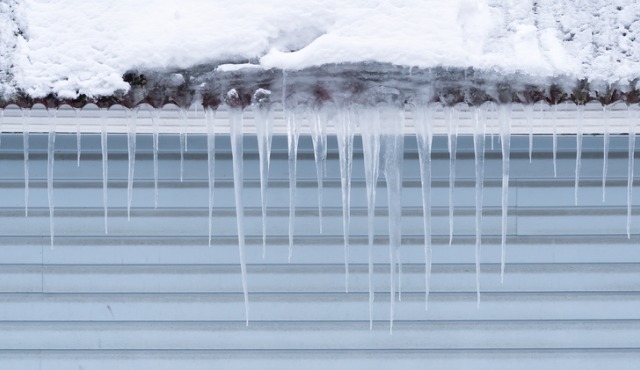By Lizzie Weakley
If you live in a location that reaches freezing temperatures, you might be concerned about the effect it could have on your home. Choosing a siding that not only looks good, but will last, is important to any homeowner. Here are three options that you can count on in the cold!
Vinyl Siding
For many homeowners, the choice of siding comes down to two options: vinyl and aluminum. Both have their pros and cons, but in most cases, one will be a better choice than the other depending on the climate. If you live in a cold climate, vinyl siding is usually the best option. It's more durable than aluminum and doesn't require as much maintenance. Vinyl is also a good choice if you're looking for a low-maintenance option. It doesn't need to be painted and is resistant to pests and rot. Aluminum siding is a good choice if you're looking for a more affordable option, and it's also easier to install than vinyl. However, it's not as durable as vinyl and is more susceptible to damage from hail and wind. If you live in an area with severe weather conditions, aluminum siding may not be the best choice for your home.
Fiber Cement Siding
Fiber cement siding is becoming an increasingly popular option, due to its energy efficiency and durability. Fiber cement is made from a mix of wood fiber, Portland cement, and sand. It is then formed into boards or panels that can be used as siding. One of the main advantages of fiber cement siding is its energy efficiency. It is a good insulator, which means it can help to keep your home warm in winter and cool in summer. Additionally, it is resistant to rot, mold and termites, making it a durable option that can withstand extreme weather conditions such as blizzards. If you're looking for an energy-efficient and durable option for your home's siding, consider fiber cement.
Cedar Siding
When it comes to choosing siding for your home, there are a lot of options to choose from. If you're looking for a natural look, cedar siding is a good choice. Cedar is a durable wood that is resistant to rot and insect damage. It's also one of the most beautiful woods, with a rich grain and natural color. However, cedar siding does require more upkeep than other types of siding, and is susceptible to fading and discoloration over time. While it's true that cedar siding requires more work than some other types of siding, the results are worth it. Cedar siding gives your home a warm, natural look that is sure to impress.
So, what's the best type of siding for your home? It depends on your needs and preferences. But if you're looking for a durable, low-maintenance option that will also help you save on energy costs, fiber cement siding is a good choice. Fiber cement siding is another good option - it's affordable and tough enough to withstand extreme weather conditions. If you're interested in adding some natural beauty to your home, cedar siding is a great choice, but be prepared to do more regular upkeep than with other types of sidings. Choose which option works best for you, and enjoy peace of mind this winter.
 Lizzie Weakley is a freelance writer from Columbus, Ohio. In her free time, she enjoys the outdoors and walks in the park with her husky, Snowball. Looking to work with a brokerage in Michigan? Weakley recommends contacting The Stockton Team.
Lizzie Weakley is a freelance writer from Columbus, Ohio. In her free time, she enjoys the outdoors and walks in the park with her husky, Snowball. Looking to work with a brokerage in Michigan? Weakley recommends contacting The Stockton Team.








